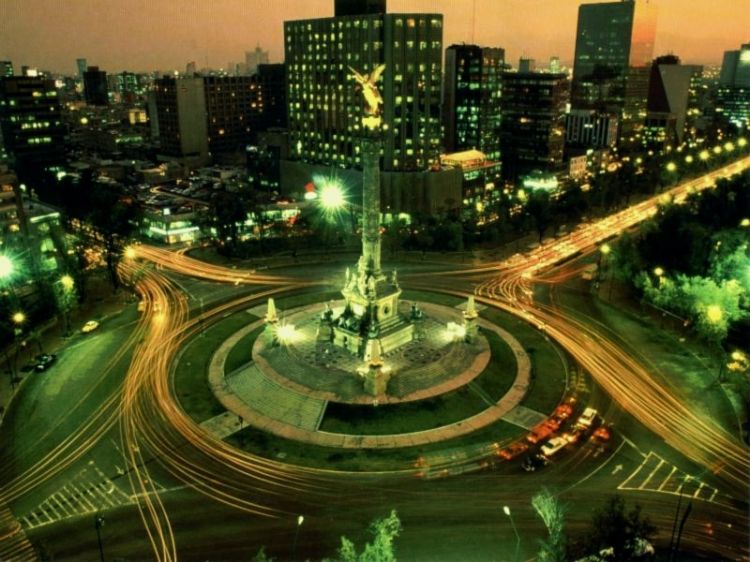.jpg)
One of UNESCOâs goals is for men and women to have spir...

According to legend, a lovely princess brought to Mexico as a slave from eastern India was the one who created the typical dress of the female China Poblana, or "Chinese from Puebla", a famous and traditional Mexican dress resulting from the blending of strange and colorful Indian clothes with Mesoamerican indigenous and Spanish garments and styles.
Just as this one, many other legends try to explain the origin of many of the local traditions in the state of Puebla, nowadays part of the symbols that shape national identity. Despite the intense debate regarding the origin of the China Poblana dress, the truth is that it is a beautiful outfit that indeed highlights the features of the mixed-race or mestiza Mexican woman.
The state also happens to be proud of its cuisine, as Puebla is credited for the creation of the famous peppers known as chiles en nogada, prepared for the first time in honor of the returning and victorious army at the end of the war for independence and led by Agustin de Iturbide. So, on August 28th each year, this exquisite and representative dish, actually made in three colors as the national flag, is prepared to celebrate the triumphal entrance of the insurgent hero into the capital city.
Other typical platters found in the state's gastronomy include the chalupas or stuffed tortillas, the cemitas or bread with sesame seed, and the local chili sauce known as the mole poblano. It seems that the nuns from the Puebla convents were very good cooks, and those working in the convent of Santa Rosa are credited as creating this succulent stew, the preparation of which is in fact surrounded by mystery as it contains more than a dozen ingredients as diverse as chocolate, a hot peeper called pasilla, dry fruit, peanuts, and some special types of seeds.
If the state cuisine was to be divided into zones or by groups with cultural influence, it turns out that the northeastern sierra hosts typical dishes as the blue mushroom with tomato sauce, lentil with pork, rabbit tamale, and the popular rabbit mixtote. Moving on to northern sierra, kitchens are filled with scents coming from hardened huachinango hot peppers, cheese bread, peanut chicken, pork sausage known as cecina, and coffee as well. On the other hand, some dishes of Mixteca descent include green peppers, marinated acoyotes, hip moles, and the black sapodilla plum.
And finally, the central zone of the state offers steamed goosefoot, trout with worm-seed, pepper soup, and thick maize tortillas filled with fried beans known as memelas.
Not to forget the delicious desserts and sweet dishes, also legacy of the nuns from the Santa Clara and Santa Rosa convents, including a dish made of a tropical fruit called pitahaya, tuber candies known as dulces de camote, nut marinas, crystallized fruits, brown-sugar candies and many other local dishes with very local names.
Since the middle of the XVI century, the Talavera objects are fabricated in the state of Puebla, an art brought to Mexico by the Dominic monks and which soon had many followers and became the symbol of the state's craftsmanship until this day. Its current relevance puts it as one of the higher expressions of art in the nation, and currently the Talavera poblana is produced in artisan's homes whose logo and place of origin has to be displayed in every object so as to verify its authenticity.
Other remarkable crafts made in the state are those deities made of paper coming from a tree called amate, the color of which indicates a magical significance regarding good or evil; the silver artifacts from Amozoc, the most famous being the spurs in-laid with mother-of-pearl, ivory or bone; the onyx or alabaster objects produced in the tranquil village of Tecali; and the delicate spheres made by artisans in Chignahuapan.
The historic and cultural richness of the state of Puebla is also reflected in the celebration of festivities. As is usually the case around Mexican communities, the Carnival is celebrated a few days before the catholic Holly Days, with great exponents such as the community of Huejotzingo, which displays costumes of remarkable colors and quality. Another event worth mentioning is that of the Huey Atlixcayotl performance, a live celebration of the permanence of the indigenous cultures in the area of Atlixco, and which takes place every last Sunday in September, and also serves the purpose of worshiping god Quetzalcoatl as a token of gratitude for the harvests received. Every one of this recreations of pre-Hispanic traditions and customs, allows the state and the nation to keep the cultural heritage of ancestral Mexico alive.
The arrival of the first equinox every 20th or 21st of march represents a festivity that takes place on top of the Tlachihualtepetl pyramid located in Cholula, as this ancient monument provides the space for those who are placed there to be renewed with positive energy as the sun rays fall on the equator. Other large celebrations in the state include the Feria del Cafe or coffee fair, the famous Day of the Dead, the Equinox in Cantona, the Fiesta del Santo Entierro or the holly burial, and the Flower Fair.
.jpg)
One of UNESCOâs goals is for men and women to have spir...

The Voterâs Mexican Credential or Federal Elect...

The Mexican State fulfills its main goal by guaranteeing ...

The word tamal has Nahuatl roots and means âwrappedâ....

The Stock Exchange of any part of the world responds to t...

In the field of international trade, Mexico is a country ...

During his last state of the union address, José L...

Pozole is a delicious dish prepared with corn, meat, pepp...

Mexicoâs Independence is the result of diverse social c...

Boca del Río is only 12 Km. south of Veracruz, on ...
